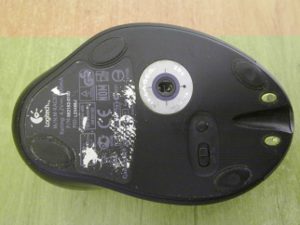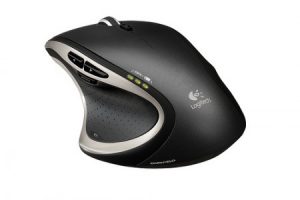This was one of my most-popular articles in 2010. It continues to be popular in Spain (¡Hola! Mucho gusto). If you enjoyed it, you might also enjoy:
- Why I believe that it’s wrong to lie to children about Santa (2009).
- The Ten Weirdest Sex Toys I’ve ever seen (2009)!
- A dirty-looking calendar I found at work (2011).
- My beliefs about why it’s wrong to lie to children about Santa (2009), complete with pictures of naughty elves.
- An argument I had (2011) with the Office of National Statistics about nonmonogamy and the census.
- Open Source Shaving (2009).
- The moment, 8½ years later, that an even better mouse came along (2019).
The Old
Back in 2006, I ordered a new mouse for my computer. Previously, I’d been using a series of mid-to-high-end five-button optical mice, like Microsoft’s IntelliMouse series: when you’re doing a lot of coding, websurfing, and video gaming, “extra” buttons make a big difference, and the IntelliMouse is fast and responsive and usable in either hand: a perfectly good all-rounder mouse. But when I destroyed my last mouse with a little too much overenthusiasm in an Unreal Tournament 2004 deathmatch, I thought it might be time to look for something a little… sturdier.
Relatively new to the European market at that time was Logitech’s new MX1000: the world’s first generally-available laser mouse: instead of using a little red LED, these mice use an invisible laser to track movements, which apparently makes them far more sensitive and accurate on a wider range of surfaces. As an ultra high-end premium mouse, the MX1000 also came with a wheel that was not only clickable but “rockable” for sideways scrolling and five other buttons (aside from the wheel and the usual three), but it was wireless and used it’s own special “cradle” to recharge. I bought one, and for years I’ve described it as the best mouse I’ve ever owned.

This mouse was so good, in fact, that I’d always planned that when it finally kicked the bucket, I’d replace it with another one exactly the same. When I said
that this was the best mouse I’d ever owned, I wasn’t kidding. It fit my palm in a way that I’d never experienced before (I have pretty big hands, and I find that those piddly little
mice that are so popular to be just useless for me, leaving me with my wrist dragging around on the desk like a beaver’s tail). I genuinely like the quirky bonus selling
points of this mouse, like its unusual “thumb rest” and its wonderful little LED gauge that tells you when it needs recharging.
My MX1000 is still going strong, despite years of heavy (ab)use. I use my mouse for hours a day, every day, and it needs to not only feel great but be rugged and durable, too. But the time comes in the life of every mouse when it’s time to be retired to less-intensive duties. Here’s the underside of my MX1000 today:

See how scuffed and worn it is from the hundreds of miles it’s travelled back and forth across my desk? Even the non-slip teflon pads are beginning to wear down! And the two little
copper contacts on the right, there, are tarnished – sometimes it takes a couple of attempts, these days, to get the pins to make a connection when dropping it into the charging cradle.
It’s time that this little mouse was put out to pasture.
But my plan – my plan to replace it with another one just the same – can’t come to pass: Logitech no longer manufacture the fabulous MX1000! Oh noes! I know it’s still possible to buy old stock or unopened second-hand ones on eBay, but this feels to me more like the universe’s way of telling me that it’s time to look for something new.
The New
So I’ve gotten myself the successor to the MX1000: a Logitech Performance MX.

And here are my observations after using it for a few days:
| Pros | Cons |
|---|---|
|
|
In short, the verdict is that the Performance MX is a worthwhile successor to the MX1000, and a great replacement when the time comes. And if you’re still using an LED or even a wired mouse (trust me, when you go wireless and lose the “tug” of the cable pulling your mouse back, you never want to go back), perhaps now is the time to upgrade.
Update – 8 March 2019: it took a while, but an even better mouse has now dethroned this one.